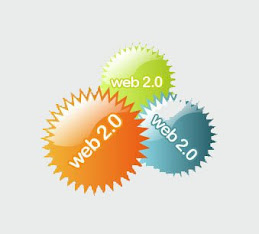1. Fist impressions count for web.
2. Speedy conclusion.
3. Lasting impressions.
According to this article (http://news.bbc.co.uk/2/hi/technology/4616700.stm) “Internet users make up their minds about the quality of a website in the blink of an eye”.
There is no doubt that when visiting a web site, first impressions is what makes the difference between the user ever going back to visit the web site, or if s/he forgets about it and never bothers to go back.
I believe this article is very important for those who are in the profession of web designing. The research focus, on three key essentials elements: First Impression, Speedy Conclusion, and Lasting Impressions.
The article also mentions how quickly the brain makes a decision on whether a particular web site is worth keep using, or not. This is why I believe this article is relevant to the class. The research describes how important it is to make a good web site so that user’s fist impression can be a lasting one.
Tuesday, March 3, 2009
Assignment #2
API—Application Programming Interface—a set of routines, data structure, object classes, and/or protocols provided by libraries and/or operating system services in order to support the building of applications.
Ajax—Asynchronous JavaScript + XML—it a technique used to create interactive or rich web application. According to Jesse James Garrett, “It is also really a group of technologies” acting together for a common purppose, making websites more dynamic for users. Google, Amazon, and Flickr are among the companies using Ajax.
Dynamic Websites—it basically means making web pages interactive for users. For example, adding a shopping cart to the website. This requires of programming languages such us APS, PHP and JAVA.
RSS—according to the article by O’Rally, “What is the Web 2.0”, not only this is a “new technology, is also the most significant element in advancing in the fundamentals of the architecture of the web”.
CGI—Common Gateway Interface—is a standard protocol for interfacing external application sofware with an information server, commonly a web server.
XSLT—Extensible Stylesheets Language Transformation.
XML—Extensible Makeup Language—is a general-purpose specification for creating custom makeup language.
SQL—Structural Query Language.
Ajax—Asynchronous JavaScript + XML—it a technique used to create interactive or rich web application. According to Jesse James Garrett, “It is also really a group of technologies” acting together for a common purppose, making websites more dynamic for users. Google, Amazon, and Flickr are among the companies using Ajax.
Dynamic Websites—it basically means making web pages interactive for users. For example, adding a shopping cart to the website. This requires of programming languages such us APS, PHP and JAVA.
RSS—according to the article by O’Rally, “What is the Web 2.0”, not only this is a “new technology, is also the most significant element in advancing in the fundamentals of the architecture of the web”.
CGI—Common Gateway Interface—is a standard protocol for interfacing external application sofware with an information server, commonly a web server.
XSLT—Extensible Stylesheets Language Transformation.
XML—Extensible Makeup Language—is a general-purpose specification for creating custom makeup language.
SQL—Structural Query Language.
Subscribe to:
Comments (Atom)

